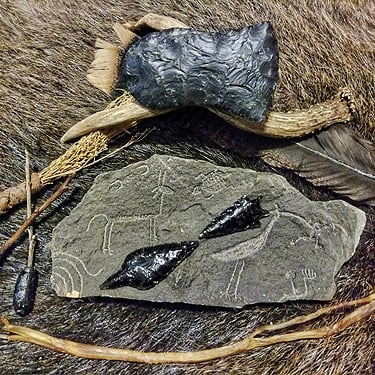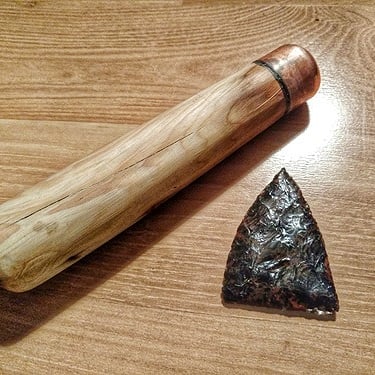Making Tools
Making Tools
Learn to make tools from the environment around you.
Learn which rocks are knappable and how to use conchoidial fracture mechanics to your advantage. Once you have the knowledge and skill you can create arrowheads, knives, spears and scrapers. From basic flaking techniques to advanced percussive knapping this is a great skill set to have.
Finding stone
In order to successfully make stone tools, first you must find the right stone. We need rock that is high in silica and has a property called conchoidial fracture. This simply means that the stone breaks when hit in a certain way. Think of it as a bb through glass, the impact point will be a small hole and the exit will be larger. If you looked closely you would notice it is in the shape of a cone. In knapping this is called a hertzian cone and on a flat surface the cone will be 132 degrees. This means that all things being equal if you hit the rock the same way you will get the same result every time.
So, what stones have this desirable feature? The first that likely come to mind are flint and obsidian, but there are many others like; agates, chalcedony, jaspers, petrified wood, opal, basalt, ryolite, and scilified sandstone. In most areas around the world there is one or more workable stone types. I get a lot of my stone out of creeks and rivers, if you looks for stones with sharp angles you will likely find some that is suitable to be worked. The next thing to look for is grain structure, grainy rock is difficult to work. Rock with smooth clean waxy surfaces tends to work easily.
Tools
Now that you have located a likely candidate to work on we need some sort of tools to work the stone. The simplest is called a hammer stone, this is usually and egg sized round cobble held in the hand and used to drive flakes off the work-piece. Hard sandstones and soft basalt tend to work well as hammer stones, but in a pinch almost anything will work. While they are the simplest in form, the art of using a hammer stone is a hard earned skill.
Many early tools were made from antler. The two main types of tools are percussion and pressure. Percussion tools are meant to strike off flakes, and pressure tools are used to push off flakes. An antler base makes a good percussor and the tines make good pressure flakers.
Most modern knappers use copper tools as they are easier to learn than the primitive methods. Simple pressure flakers are made from branches drilled to accept heavy copper wire, the tip is then hammered into a point making the copper work harden and the point last longer. Copper boppers used for percussion can be simply made from 3/4" or 1" copper pipe caps. The end needs domed out into a semi-spherical shape, then the inside can be partially filled with melted lead or brass, after cooling the cap is affixed to a handle with epoxy.






